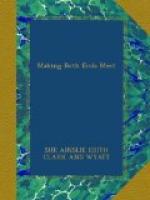After the New York City Consumers’ League had received the inquirers’ report, it determined that the wisest and most effective course it could take for securing fairer terms for the laundry workers would be an effort for the passage of the following legislation:[37]—
First: That an
appropriation be made for additional factory
inspectors.
Second: That no
woman be employed in any mechanical
establishment, or factory,
or laundry in this State for more
than ten hours during
any one day.
Third: That the
laundries of hotels and hospitals be placed
under the jurisdiction
of the Department of Labor.
A New York State law now exists providing for proper sanitation and plumbing and clean drinking water for employees in factories and laundries.[38] A law exists requiring that work-rooms where steam is generated be so ventilated as to render the steam harmless, so far as is practicable.[39]
A law exists requiring the provision of suitable seats for the use of female employees in factories and laundries; and this law should cover the installation of seats for great numbers of workers now standing.[40]
The establishment of juster wages, as well as the observance of all these laws, and of the sixty-hour-a-week law, might be most practically furthered by the existence of a trade-union in the laundries, backed by stronger governmental provision for inspection.
V
It has been said that the unfortunate features observed in the laundry business in New York seemed to be due primarily to lack of general regulation. In February 1911, the Laundrymen’s Association of New York State (President, Mr. J.A. Beatty), the Manhattan Laundrymen’s Association (President, Mr. J.A. Wallach), and the Brooklyn Laundrymen’s Association (President, Mr. Thomas Locken) conferred with the Consumers’ League, and asked to cooeperate with it in obtaining additional factory inspection, the legal establishment of a ten-hour day in the trade, and the placing of hotel and hospital laundries under the jurisdiction of the State Labor laws.
The League agreed to print on a published white list the names of the laundries conforming within a year to a common standard determined on at the conference. These are the main points agreed upon and endorsed.
WHITE LIST STANDARD FOR LAUNDRIES
Physical Conditions
1. Wash rooms are either
separated from other work-rooms or else
adequately ventilated so that the presence
of steam throughout the
laundry is prevented.
2. Work, lunch, and retiring
rooms are apart from each other and
conform in all respects to the present
sanitary laws.
3. All machinery is guarded.
4. Proper drains under
washing and starching machines, so that
there are no wet floors.




